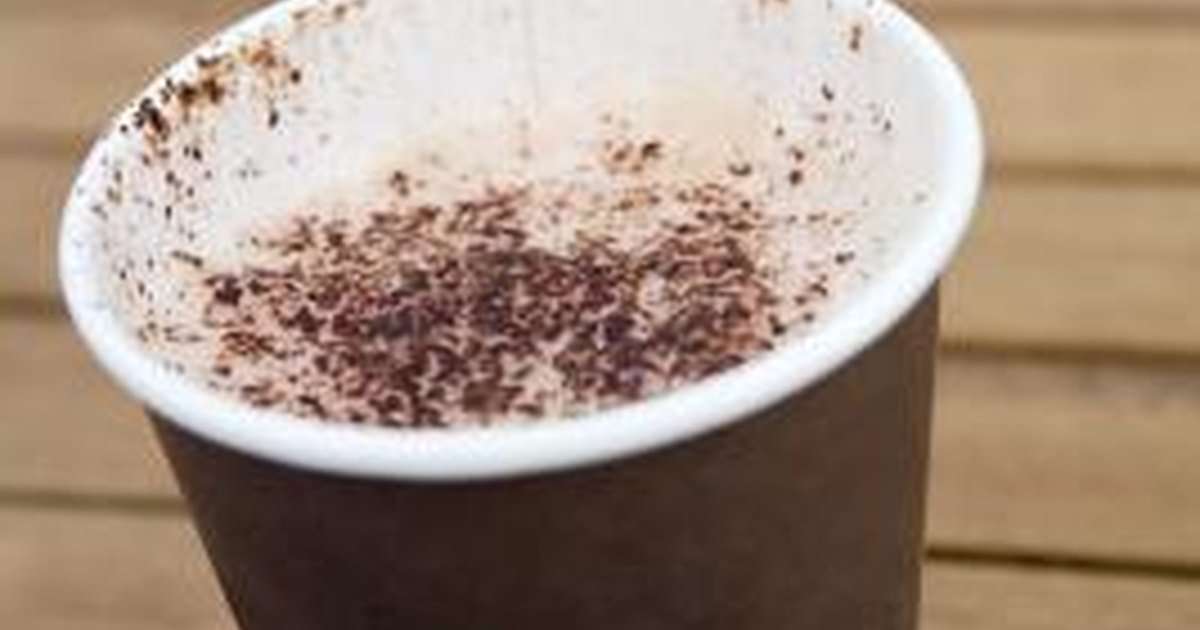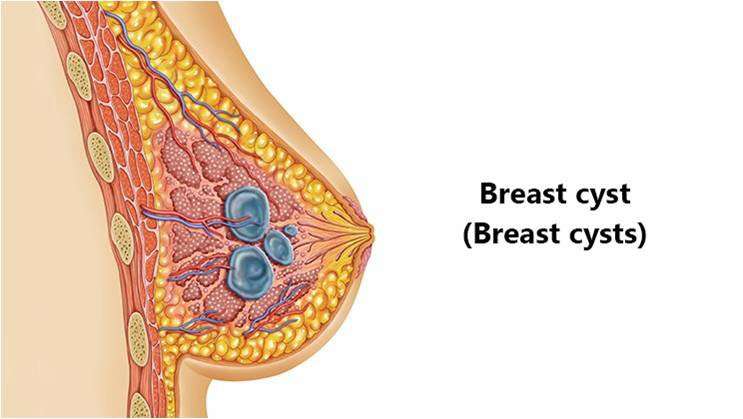Benign Fibrous Breast Tumors
All fluid-filled breast lumps are benign, but some fibrous lumps may also be harmless. Fibroadenomas fit this description, and frequently occur due to an overabundance of milk-producing glands. This type of benign lump is usually painless, and can be either stationary or mobile.
Because they are fibrous in nature, fibroadenomas typically require a biopsy for diagnosis. Once they are confirmed to be benign, however, most usually require no further treatment.
An intraductal papilloma is another type of benign, fibrous growth that occurs in the breasts, usually near the nipple. These growths occur in the milk ducts, and may be accompanied by nipple discharge that is clear or sometimes bloody.
Since, like fibroadenomas, intraductal papillomas are benign, your doctor will likely recommend no further treatment once cancer has been ruled out. If the papillomas are painful or too bothersome, though, they can be surgically removed.
Green Tea And Breast Cancer Recurrence
Many people who have faced breast cancer are worried about the risk of recurrence, especially upon learning that those who have estrogen receptor positive breast cancer are more likely to have a recurrence after 5 years than in the first 5 years following treatment. While we don’t have any solid information on coffee intake and breast cancer recurrence risk, the caffeinated beverage green tea might be an option to consider.
Not only has green tea consumption been associated with a lower risk of developing breast cancer, it’s been demonstrated to have anti-cancer activities and it’s most powerful link appeared to be in reducing the risk of late recurrence of breast cancer. Since the risk of recurrence of estrogen receptor positive breast cancer remains constant for at least 20 years , this may be good news for those who enjoy green tea.
How Is It Diagnosed
Usually, your healthcare provider can diagnose fibrocystic changes with a physical exam. To be sure of the diagnosis, your provider may recommend that you get a mammogram, a breast ultrasound, or aspiration of the cyst . Or your provider may ask that you simply return for another exam in 2 to 6 weeks, depending on where you are in your menstrual cycle.
Recommended Reading: How To Clean A Mr.coffee
How To Relieve Breast Tenderness Or Pain
- A warm shower, bath or hot water bottle to the breast
- An ice pack over the breast may be more effective than warmth
- A comfortable, supportive bra, such as a sports bra
- Going without a bra may be more comfortable
- Reduce your intake of caffeine, including coffee, tea, cola and chocolate
- Reduce your intake of salt and fat
- There is some evidence that suggests the use of vitamin B6 , vitamin B1 and/or evening primrose oil may help
If none of the above relieves your breast discomfort, seek advice from your doctor.
Does Caffeine Cause Cancer

The research on drinking coffee and the potential risk of cancers found that the risk of cancer isnt increased by consuming coffee. Furthermore, drinking coffee is accompanied by a decreased risk of cancer of the liver and produces a beneficial effect on liver enzymes and cirrhosis.
Does caffeine cause cancer? In another analysis, coffee consumption was associated with a decreased risk of endometrial cancer. A possible reduced risk was also demonstrated in certain studies for pharyngeal/oral cancer and prostate cancer .
Case-control research studies showed that coffee drinking produces favorable effects on colorectal cancer. For cancer of the urinary bladder, the relationship between caffeine and cancer isnt consistent, but any possibility of direct association isnt related to duration and dose and may also depend on the persistent effect of smoking.
According to the evidence, there is no overall association of coffee intake with the occurrence of cancers of the lungs, pancreas, stomach, prostate, ovary, and breast.
Does caffeine cause cancer? While consuming coffee is no longer classified as carcinogenic , in 1991, coffee drinking was classified as being probably carcinogenic to human beings.
For more than 20 other malignancies, evidence of a link between caffeine and cancer was inconclusive.
Recommended Reading: Sonic Iced Coffee Caffeine Content
How Can I Take Care Of Myself
Always do monthly breast self-exams after your menstrual period. If you no longer have periods, examine your breasts at the same time each month, for example, on the first day of every month. Also have a yearly exam by your healthcare provider and get regular screening mammograms as advised by your provider.
Because lumps can be a symptom of either fibrocystic breast changes or cancer, it is important to see your healthcare provider when:
- You haven’t had a breast exam in over 1 year.
- New lumps appear.
- An existing lump changes in some way.
- Other breast symptoms develop, such as skin color changes, dimpling of the skin, or discharge from the nipple.
Caffeine And Cancer: Is There A Direct Link
So far, there isnt any scientific evidence proving that caffeine increases cancer risks. In fact, caffeine may influence the general well-being of cancer patients. Flo looks at the connection between caffeine and cancer and provides healthy lifestyle tips on enjoying your morning cup!
Don’t Miss: How Much Caffeine Does Folgers Coffee Have
Can Caffeine Cause Breast Lumps
It cannot be said that caffeine causes breast lumps or cysts or fibrocystic changes in the breasts. Furthermore, theres no evidence to suggest a relationship between drinking coffee and breast cancer.
Some women anecdotally report that their symptoms of breast pain improve when they stop or decrease the amount of coffee in their diet. This effect isnt documented by any research, but you can go caffeine-free and see if this relieves the discomfort of breast lumps and cysts.
People who have cancer should avoid the following beverages, particularly during and after chemotherapy:
- Very cold or hot beverages
- Caffeinated beverages
- They should also use milk products with caution.
Breast Pain Why You Can Stop Worrying About Cancer
Here are nine things it probably is instead.
The fear factor
Breast pain can be scary. Your mind immediately thinks cancer, but in all likelihood, cancer is not the cause. The important thing for patients to realize is that while it can be a sign , it is very rare, says Dr. Michael Cowher, a breast surgeon with Cleveland Clinic. Breast cancer rarely produces painful symptoms, and the best way to detect it is still with your fingers. Breast pain is often related to hormonal changes, but there are other causes. Here are some to consider.
Premenstrual pain
Women often feel heaviness in their breasts right before their period even to the point of experiencing pain while walking up stairs. This is because the surge in the hormones estrogen and progesterone cause the breasts milk glands and ducts to enlarge and the breasts to retain water. This type of pain usually resolves during or shortly after the menstrual cycle, when hormones have returned to their normal levels.
Costochondritis
This is an arthritic pain in the middle of the chest, between the ribs and breastbone, and it is caused by poor posture or aging. Women describe it as a burning sensation in the breast. The symptoms may mimic those of a heart attack or other heart condition. If swelling is involved, it might be a condition called Tietze Syndrome. Applying heat or ice or taking ibuprofen can usually treat this type of pain.
Noncyclical breast pain
Fibrocystic breast condition
Too much caffeine
An old bra
Also Check: How Much Caffeine Does Folgers Coffee Have
What Causes Breast Pain
Pain is one of the most common breast symptoms prompting women to seek medical attention. However, contrary to its significance in most parts of the body, pain in the breasts is usually not a sign of a serious problem.
It most often represents sensitivity of normal breast tissue to dietary factors, medications, or hormonal changes. Mastalgia, or breast pain, can also arise from breast cysts, localized infections, or inflammation in the muscles or ribs behind the breasts, most of which can easily be identified and treated.
In the rare situation where pain is the result of breast cancer, it almost always occurs after the cancer has become obvious in other ways such as a prominent breast lump or a visible change in the breast appearance. In summary, breast pain typically represents a challenge of symptom management, not a threat to life.
Most women are familiar with the cyclic pattern of breast pain and sensitivity related to the hormonal changes of the menstrual cycle. Symptoms often affect both breasts, but can affect one breast more than the other and generally increase in severity prior to a period. Usually the pain involves the whole breast, or one consistent area of the breast often the upper, outer breast towards the armpit, or the central breast including the nipple. The pattern is familiar from month to month, and tends to resolve completely with the onset of menses.
How Is It Treated
There is no accepted medical treatment for getting rid of the breast changes, but there are a number of things you can do to try to relieve discomfort.
- Nonprescription drugs such as ibuprofen, acetaminophen, and aspirin may be helpful for pain.
- Wear a well-fitting bra for support, especially when you are physically active.
- Warm soaks or ice packs may help to reduce or prevent symptoms.
- Drink less coffee, tea, and soda containing caffeine, which may aggravate the cysts. Also try avoiding chocolate.
- Ask your healthcare provider about supplements such as evening primrose oil, available at health food stores, and vitamins such as vitamin A, B complex, and vitamin E may help reduce symptoms.
- If your symptoms are severe, you may want to discuss with your provider the pros and cons of prescription drugs such as hormones.
Some cysts can be treated in the provider’s office by aspiration. In this procedure, after local anesthesia, fluid in the lump is removed with a tiny needle attached to a syringe. If a lump does not disappear completely after aspiration, it should be looked at again by your provider.
Also Check: Coffee Grinds And Cellulite
Wear A Supportive Bra
A well-fitting, supportive bra will not resolve fibrous tissue, but it may help decrease discomfort. A properly fitted bra should provide support without being too tight. According to one article, of people find that wearing a well-fitting bra can reduce pain within 3 months.
People who are unsure about the best bra size and type may consider seeing a bra-fitting specialist.
Consider Yearly Mri Screenings

For women with a high breast cancer risk from dense breast tissue or other risk factors, discuss with your doctor about having a yearly MRI screening. Breast MRI finds an average of 10 additional cancers per 1,000 women, even after a mammogram and ultrasound screening.
If you dont have a mammogram, you cant know if you have an increased risk of breast cancer from having dense breasts, a spokesperson for the National Cancer Institute emphasizes. Women should discuss family history and other risk factors with their healthcare provider to determine the mammogram schedule most appropriate for them.
Whether to have yearly supplemental breast screening if you have dense breasts is an individual decision. Discuss the pros and cons with a doctor.
Supplemental screening increases the early detection of breast cancer in dense breasts. And catching a breast cancer tumor early has a better outcome.
The U.S. Preventive Services Task Force advised in 2016 that the current evidence wasnt sufficient to assess the balance of benefits and harms of additional screening for women with dense breasts. Potential harms include:
- possible false positives
- psychological burden
The website of densebreast-info.org reviews the pros and cons of screening.
You can also find more screening information in the patient guide to screening options on the website of the nonprofit organization areyoudense.org.
You May Like: Root Beer Caffeine Content
Does Drinking Coffee Make Breasts Denser
If you are wondering or have heard that drinking coffee makes your breasts denser this is not 100% true. There have been studies done that show little to no association with breast density in premenopausal women.
The connection between the dense breast tissue and caffeine or coffee is not yet fully understood. There are many genes in the body that will be involved in the estrogen metabolism and inflammation resulting from caffeine consumption.
According to the American College of Radiology, there are 4 different types of breasts.
Reduction In Breast Cancer Risk
Caffeine consumption has been associated with a decreased risk of breast cancer in a few studies, though the results have been inconsistent. Furthermore, the reason for a possible link, as well as the ideal timing and amount of caffeine consumption that could potentially have any effect on breast cancer, are not understood.
An Italian group of researchers who examined 21 studies about this subject noted that they could not find a relationship between caffeine consumption and breast cancer. But when they looked at a small subset of the data, they reported that four cups of coffee per day was associated with a 10% reduction in postmenopausal cancer risk.
A Swedish study echoed this, noting that coffee consumption was associated with a decrease in breast cancer among postmenopausal women. Women who consumed three to four cups of coffee per day had a slightly lower rate of breast cancer than women who consumed two cups of coffee per day or less. And women who consumed five or more cups of coffee per day had an even lower rate of breast cancer.
Researchers who conducted a large multinational trial also suggested that a higher intake of caffeinated coffee could be associated with a lower risk of postmenopausal breast cancer.
You May Like: Where Can I Buy Verismo Pods
Assessment Of Medical History Anthropometric Data And Other Lifestyle Factors
On the 1976 baseline questionnaires, we requested information about age, weight and height, smoking status, family history of breast cancer, use of hormone therapy, and personal history of other diseases. This information has been updated on the biennial follow-up questionnaires. Body mass index was calculated as weight in kilograms divided by the square of height in meters. Alcohol intake was assessed on the FFQ from consumption of beer, wine and liquor. Other covariates included were age at menarche, parity, age at first birth, age at menopause, history of benign breast disease, physical activity, weight change after age 18.
Caffeine Can Aggravate Breast Cysts
Tue., July 20, 2004
Dear Dr. Gott: Please advise about whether I can continue having my morning cup of coffee. My gynecologist doesnt want me to have any. Im 51 and on hormone replacement therapy. I do have fibrocystic breasts, but there is no family history of breast cancer. I try to maintain a healthful lifestyle, but I really want that coffee.
Dear Reader: Some people are extremely sensitive to the effects of caffeine, a stimulant found in coffee and many teas and colas. The drug can cause irritability, nervousness, insomnia, rapid pulse and other symptoms. It can also worsen breast cysts.
One of the most common female complaints is soreness and tenderness due to fibrocystic disease, a poorly understood disorder marked by breast discomfort and swelling. The condition, which appears to run in cycles, may be aggravated by caffeine. Therefore most gynecologists advise women suffering from this disease to shun caffeine-containing beverages, substituting decaf coffee or other suitable beverages instead. Because fibrocystic breast disease is not a hazard to health, you have options.
On one hand, you can follow your doctors advice and see if you feel better.
On the other, you can enjoy your cup of morning coffee and put up with the breast discomfort.
The choice is yours.
Local journalism is essential.
You May Like: Does Caffeine Cause Inflammation In Joints
Does Coffee Make Your Breasts Smaller
There have been many inaccurate statements and myths spread by articles online about coffee and breast size. The last thing I want is for females to be scared of drinking coffee in fear their breasts will be affected negatively.
All the information in this article are facts backed by research studies and I have linked the studies when referencing them.
Inflammation Of The Breast
This condition causes redness, heat, lumpiness and pain in the affected breast tissue. Most commonly, this is caused by an infection during breastfeeding, but it can occur at other times due to blockage and inflammation of the breast duct with an infection.
Treatment may include:
- antibiotics for the bacterial infection
- anti-inflammatory medication to relieve inflammation and pain
- continuing to breastfeed or express milk, as draining the breast helps clear the blocked ducts.
Treatment with antibiotics needs to be started immediately to prevent an abscess forming. If an abscess forms, a small surgical procedure is required to drain it.
Recommended Reading: Where To Buy Verismo Coffee Pods
How Is Benign Breast Disease Managed Or Treated
Most types of benign breast disease dont require treatment. Your healthcare provider may recommend treatment if you have atypical hyperplasia or a different kind of benign breast disease that increases your future risk of breast cancer. If you experience pain or discomfort or have an increased cancer risk, these treatments can help:
- Fine needle aspiration to drain fluid-filled cysts.
- Surgery to remove lumps .
- Oral antibiotics for infections like mastitis.
Caffeine Can Cause Breast Pain

If your breasts are sore or sensitive after drinking coffee it may be because of the caffeine. There have been conflicting studies done on breast pain and caffeine, but it may affect each person differently.
Our breasts have little ducts, and, on occasion, those ducts can swell up due to stimulants like caffeine and chocolate.
You can also have hormonal fluctuations caused by caffeine that can cause your breasts to become sore. This is due to a rise in estrogen and progesterone before your period which can be accentuated by consuming caffeine.
Also Check: Most Caffeinated Drinks